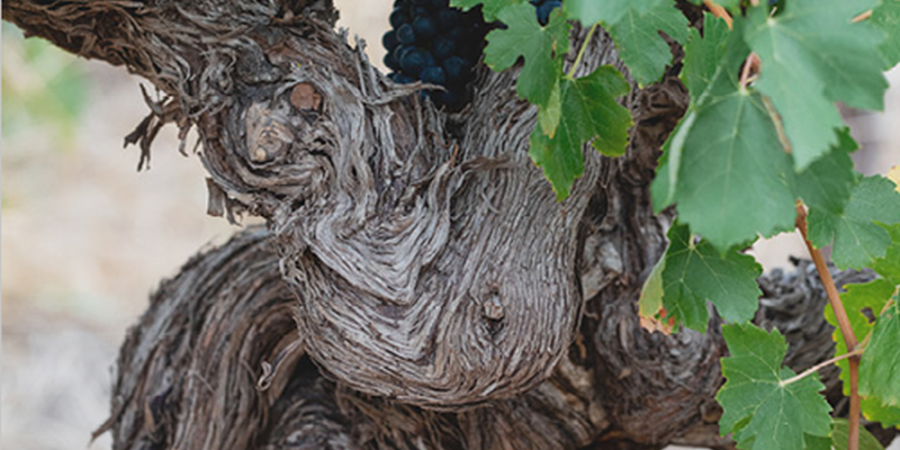I promise I’ll stop going on about how great Sauvignon Blanc (particularly Rob’s version) is soon (…er or later).
But before I do, let me just tell you about the little launch party we had for our brand-new 2023 vintage last week.
What a party it was!





And everyone ADORED the wine of the moment!
Although its official release isn’t for another couple of months, we accidentally sold so much of it that we figure we may as well keep going!
If you haven’t seen the email in your inbox announcing a couple of too-good-to-be-true specials (on not just the new Sauvignon Blanc, but also our current release Shiraz), then I give you permission to have a look now.
Now that you’ve grabbed yourself a bargain and I have your full attention, let’s get onto this week’s topic.
BIOSECURITY ALERT
Last month Vinehealth Australia advised the South Australian wine industry via a Biosecurity Alert that a new detection of phylloxera occurred in Victoria’s Yarra Valley.
Agriculture Victoria confirmed the new detection of phylloxera and has proposed an extension to the boundary of the Maroondah Phylloxera Infested Zone (PIZ).

Basically, all this means is that all the people who grow grapes in the orange section of this map, now have to adhere to the rules that the people in the pink part have been following.
The most important of those rules are…
Do not move any phylloxera host material unless said movement is made under a permit and the permit conditions are adhered to.
Host materials include:
- table grapes
- wine grapes
- grape must and unfiltered juice
- grape marc
- grape cuttings and rootlings
- potted grapevines
- diagnostic samples
- used agricultural equipment and packages (including bins)
- earth material (vineyard soil)
OK, but so what? What does all that mean? And why is it “Alert” worthy?
First things first…
What is Grape Phylloxera?
The grape phylloxera (Daktulsphaira vitifoliae) is a small yellow insect only just big enough to see by the naked eye that destroys grapevines by eating the roots.

The insects can crawl along the soil surface, in the canopy or below ground from root to root. This means that they’re easily spread—on boots, clothing, equipment, and vehicles or can be moved with soil and vine material.
Many of the grapevines grown in Australia are susceptible to the pest, which can kill a vine within six years. There is no cure for it, so if vines are infested they must be destroyed and replaced.


Loving our blog? Sign up for weekly updates straight to your inbox…
[withwine type=’join-mailing-list’]
A little history
When this tiny insect took hold in Europe it nearly destroyed every single wine grape in the world. In the late 1800s, wineries all over Europe ripped up and burned their family’s ancient vineyards in a desperate attempt to stop the spread of disease.
In France alone, total wine production fell from 84.5 million hectolitres in 1875 to only 23.4 million hectolitres in 1889.
By the 1900s Phylloxera had taken a beyond-imaginable toll: over 70% of the vines in France were dead. The livelihoods of thousands of families were ruined. All of a sudden, the world launched into an international wine deficit.
Devastated by the wrath, the Minister of Agriculture and Commerce in France offered 20,000 Francs to anyone who could find a cure.
Where did it come from?
Phylloxera was introduced to Europe when avid botanists in Victorian England collected specimens of American vines in the 1850s.
Because phylloxera is native to North America, the native grape species are at least partially resistant. By contrast, the European wine grape Vitis vinifera is very susceptible to the insect.
In France, one of the desperate measures of grape growers was to bury a live toad under each vine to draw out the “poison”. Areas with soils composed principally of sand seem to be spared. And the spread was slowed in dry climates. But gradually phylloxera spread across the continent.
The Reward Was Never Paid!
Over 450 articles poured out about the subject of Phylloxera between the years 1868 – 1871. Studies were conducted with test plantings, poison, flooding, soil types, grape breeding alternatives, and much more.
Then, an independent group of researchers including a Frenchman, Jules Émile Planchon, and an American, Charles Valentine Riley, discovered a solution. Grafting the European grapevine (Vitis vinifera) onto American rootstock stopped the root-eating louse.
While the original researchers never sought the reward a viticulturist in Bordeaux called Leo Laliman did. Laliman had taken the experimental techniques and turned them into a commercial practice in Bordeaux. The government turned him down, saying that he’d merely used preventive measures and didn’t develop a cure.
Phylloxera Resistant Vineyards
There have been several cases where vineyards have remained untouched by grape phylloxera. While many of these locations are a mystery, a high proportion of the phylloxera-resistant vineyards have sandy soils in areas with high winds.
Here in Australia, Queensland was infected in the 1870s. The government responded to protect our precious vineyards with the Vine Protection Act of 1874, which ceased the common practice of transporting vines, machinery and equipment throughout the states.
Today, South Australia, Tasmania and Western Australia have still never been infested thanks to this early intervention.

Oh the Launch Party looks delightful!
Perfect midwinter coziness;
flowers, food, wine, wine drinkers!!!
HI Somerled Family, I still read your Blogs Maree and you do a wonderful job. Just to let you know We are drinking tonight our last 2016 Shiraz. Miss you folk but I am sure we will pop in unannounced one day.
Hi guys, Thanks for the lovely message. Boy, 2016 Shiraz! I bet that went down a treat! We miss seeing you too and look forward to your next surprise visit. take care 🙂
So, perfect! other than the fact you weren’t there.